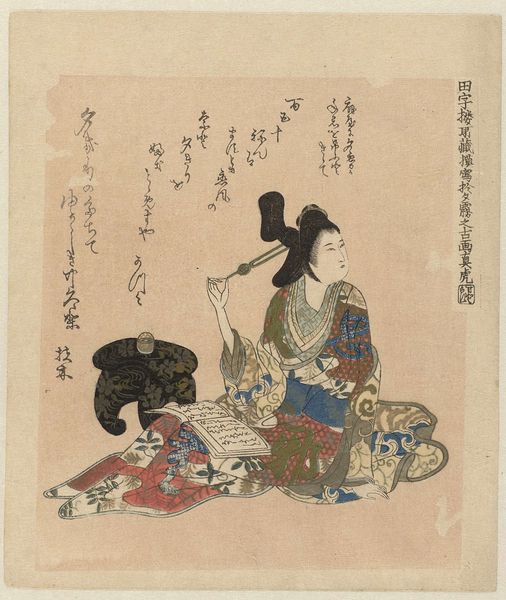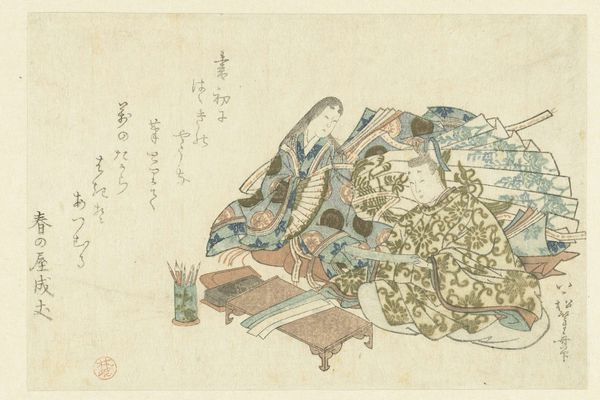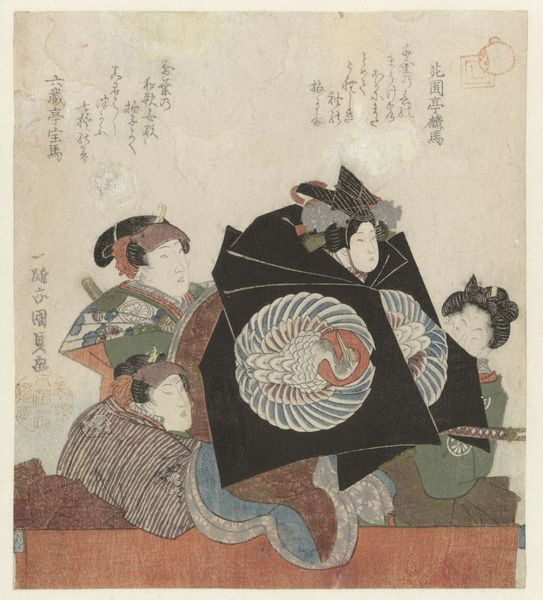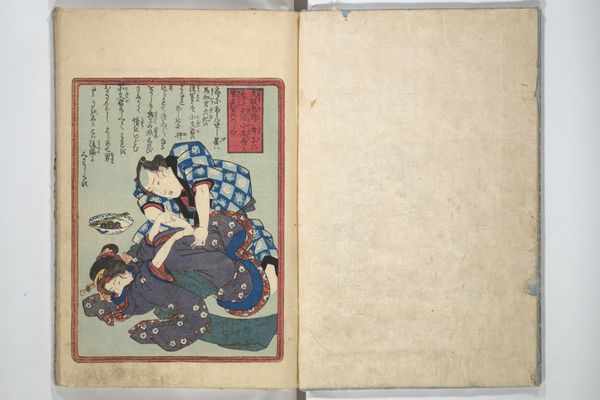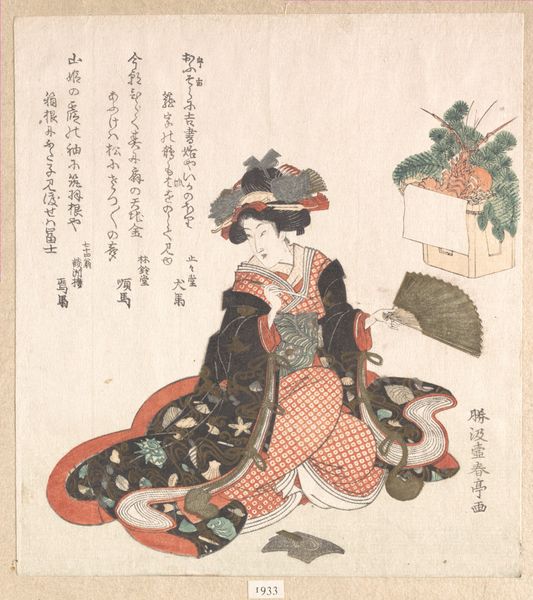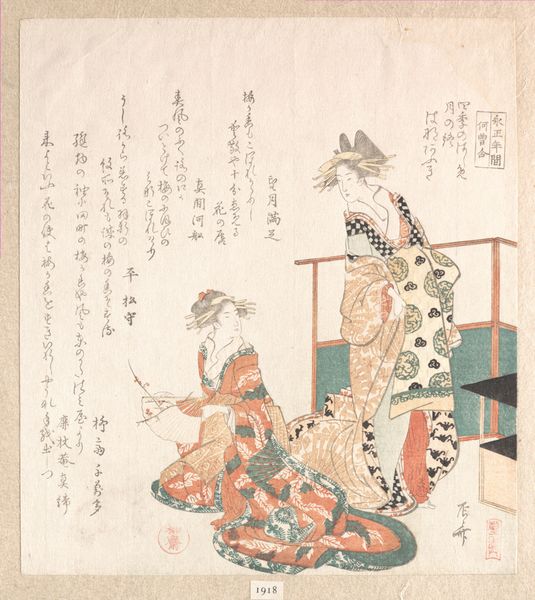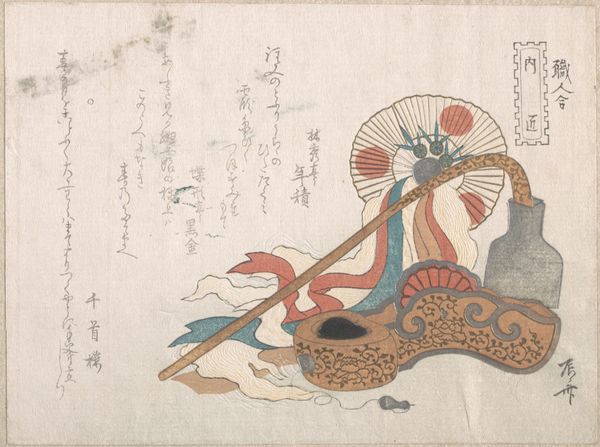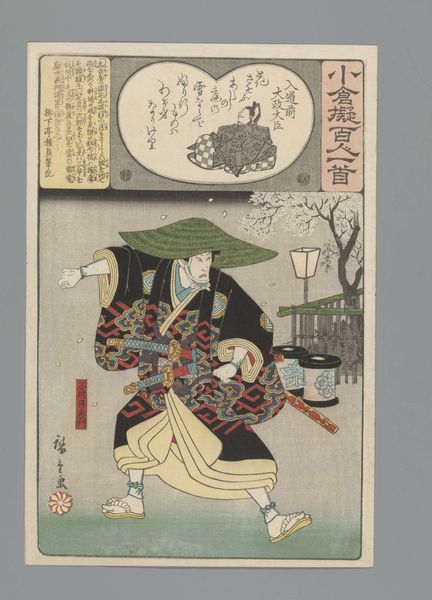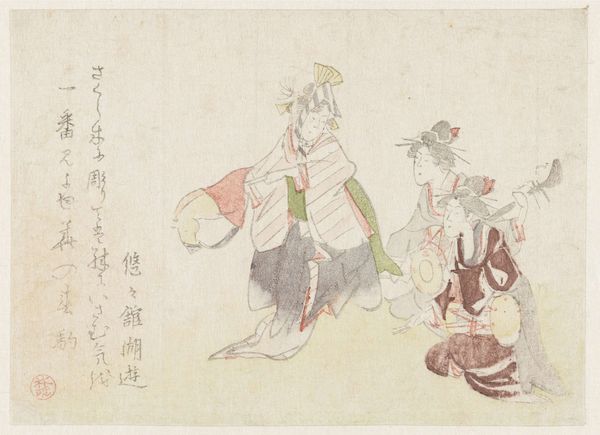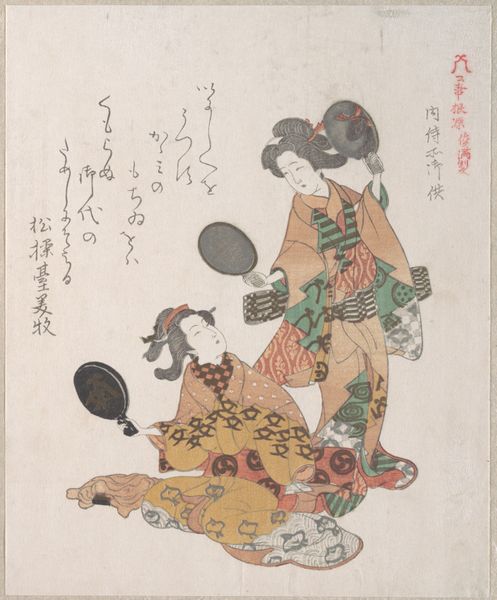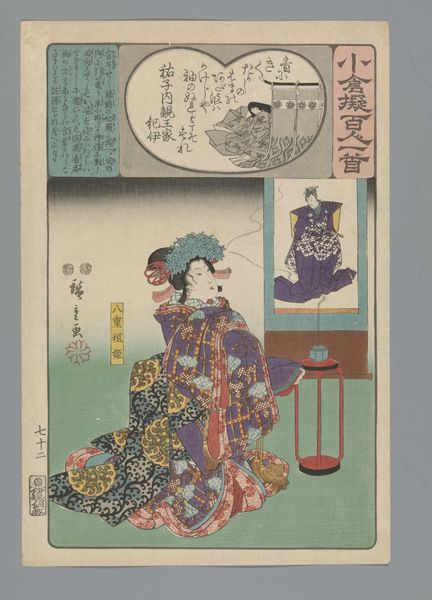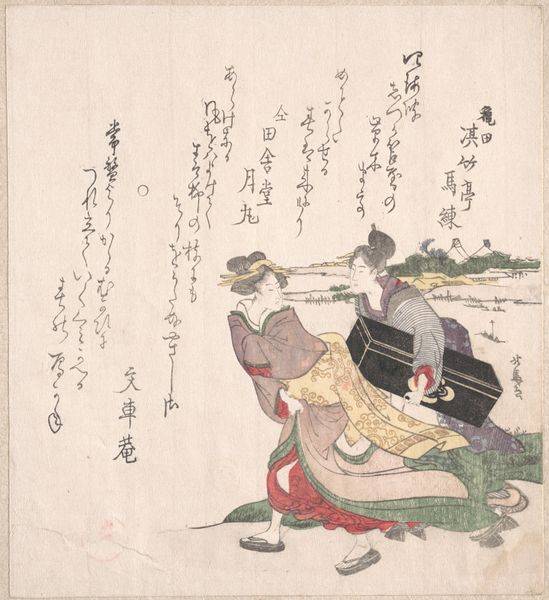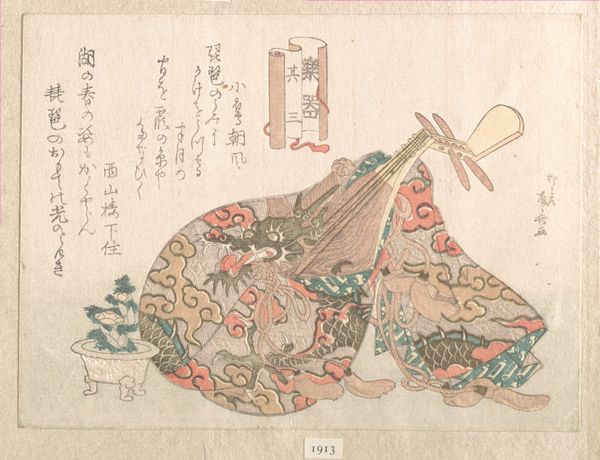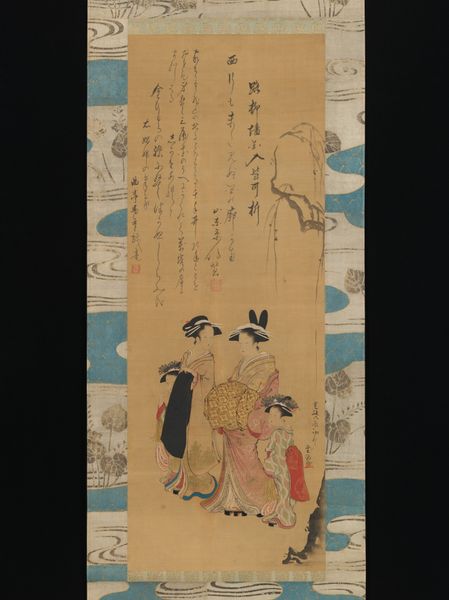
print, woodblock-print
portrait
asian-art
ukiyo-e
figuration
historical fashion
woodblock-print
genre-painting
Dimensions: height 200 mm, width 184 mm
Copyright: Rijks Museum: Open Domain
Curator: I’m struck by the intimate nature of this ukiyo-e print from 1836, made by Utagawa Kunisada, and residing here at the Rijksmuseum. It’s entitled, "Aapje biedt een almanak aan een courtisane," which translates to "A Monkey Offers an Almanac to a Courtesan." It is a genre painting, realized as a woodblock print. Editor: My first impression is a delicate theatricality. The textures of the garments and the overall composition evoke a sense of playfulness. The monkey, an unexpected touch, immediately draws my eye and sparks curiosity. Curator: The imagery has strong cultural connections; this type of print catered to the rising merchant class in Edo-period Japan, providing them with glimpses into the pleasure quarters and aspirational lifestyle. Notice the elegant courtesan, she is depicted in elaborate attire, but it’s about much more than just pretty pictures. It represents a fascination with the floating world and all its transient delights. Editor: Yes, and consider the monkey’s role. Monkeys often symbolize mischievousness and imitation. Presenting the almanac, the calendar, suggests a commentary on time, fortune, and the ephemeral nature of beauty. I imagine, giving someone a calendar, means acknowledging a temporal awareness – in a bittersweet way. Curator: I think it also served a socio-political function, indirectly challenging the established hierarchy by celebrating aspects of urban life that were technically outside the moral boundaries of the ruling samurai class. These prints circulated widely, contributing to the creation of a shared cultural experience. The courtesan's domain could be said to represent a freedom and diversion from everyday expectations. Editor: Indeed. I also read the monkey figure as a subtle commentary on the perceived roles and power dynamics present at the time: with it, a symbolic role reversal begins to form: perhaps also a metaphor for the ever-turning wheels of fortune, represented by the turning of a calendar? It serves as a tangible symbol, hinting at broader societal shifts. Curator: These floating world images provided both entertainment and subtly reinforced emerging social identities. Kunisada was acutely aware of the market, adapting his art to meet its evolving demands. That’s the point—it’s always both, personal vision and economic reality intertwined! Editor: Definitely something to contemplate when reflecting upon visual histories! Curator: Well put!
Comments
No comments
Be the first to comment and join the conversation on the ultimate creative platform.
